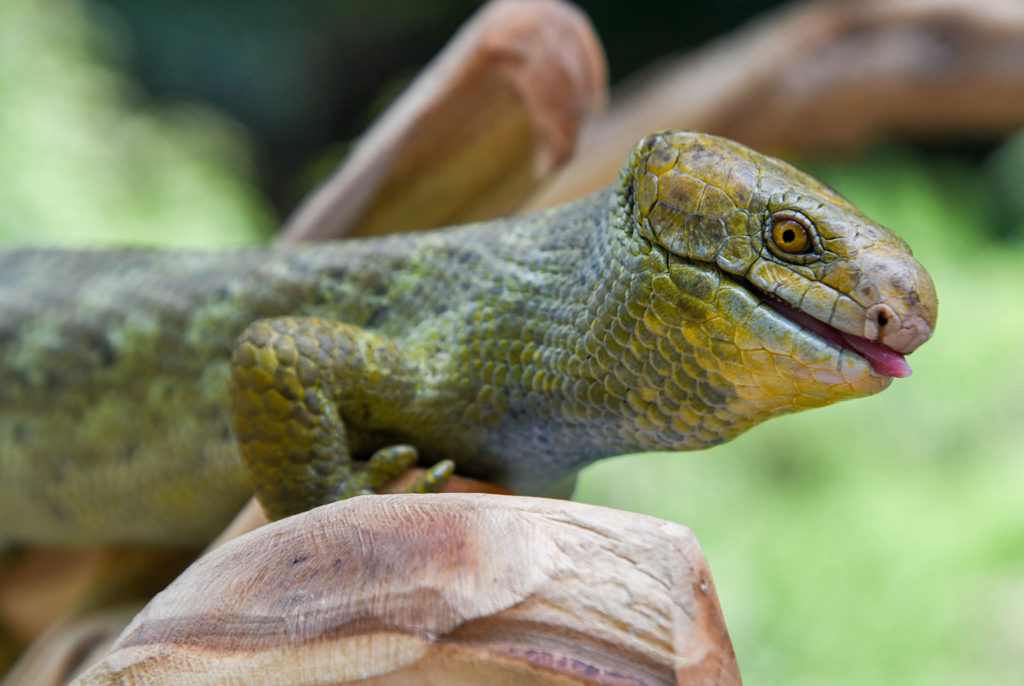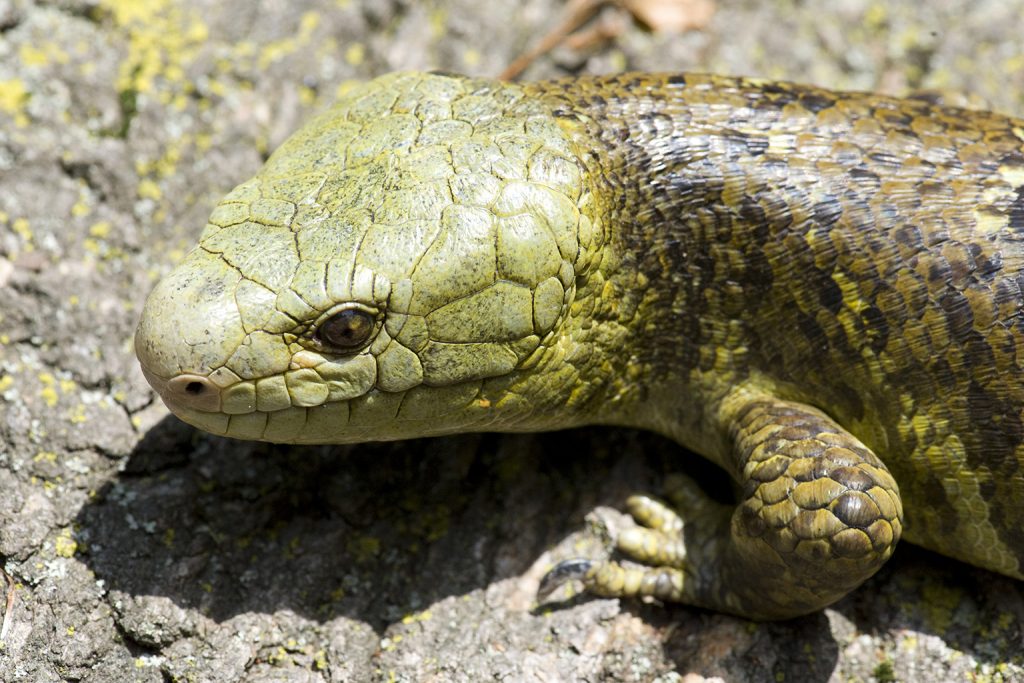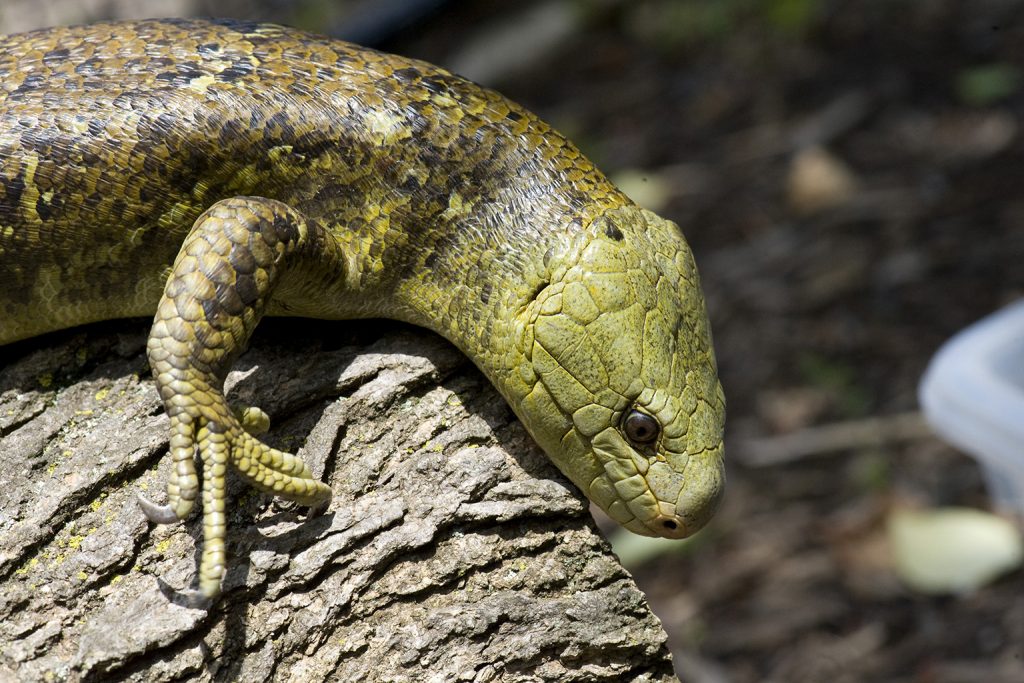Overview
“Where I Live”
Prehensile-tailed skinks are native only to the Solomon Islands, an archipelago in the Pacific Ocean located northeast of Australia. They are rainforest animals that live in tall trees.
“How I Live There”
Prehensile-tailed skinks are almost exclusively arboreal, which means that they rarely descend to the ground. They are well adapted for life in trees. They use their long, prehensile tails to grasp branches and maintain their balance. (The word prehensile is derived from the Latin verb prehendere, which means “to seize or grasp.”) They also have hooked claws on their long toes that act as climbing picks when they move up, down, or along a trunk or branch.
During the day, prehensile-tailed skinks stay hidden among branches and in tree hollows. They are active in the early morning and early evening and perhaps also at night. They move slowly through the trees, feeding on leaves and fruit. They are particularly fond of the Solomon Island creeper plant. Some of the plants that they eat are known to be mildly toxic but seem to cause the skinks no ill effect.
Although shy and reclusive, prehensile-tailed skinks are also oddly social for reptiles. They form social groups made up of one or more bonded pairs of adults plus several other related or unrelated skinks.
“Making My Mark”
Among skinks, the prehensile-tailed skink is remarkable in many ways. It is the largest of all skinks. It is the only known species of skink with a grasping, or prehensile, tail. It is also the only known species of skink to be entirely herbivorous.
Raising Young
Prehensile-tailed skinks are one of very few reptiles to give birth to live young. After a gestation period of seven to eight months, females give birth to one, sometimes two, offspring. The offspring are remarkably large – about 1/3 the size of the adult female! Both parents help protect their offspring for the first several months. Baby skinks will stay with their family groups indefinitely, until moving on to form their own new family groups.
“What Eats Me”
Prehensile-tailed skinks may be preyed upon by birds of prey, snakes, and rats. They are also threatened by people who capture them illegally for the pet trade. When threatened, this typically sluggish and docile reptile will hiss and possibly bite in self-defense.
Conservation
Prehensile-tailed skinks have not yet been assessed by the IUCN, the world’s leading conservation organization, and therefore have no IUCN listing. However, they are known to be threatened by ongoing habitat loss on the Solomon Islands and over-collection for the pet trade. The Solomon Islands are undergoing rapid deforestation for agriculture and the lumber industry, which puts pressure on rainforest-dependent species such as this one.
Prehensile-tailed skinks are protected under Appendix II of CITES (Convention on International Trade in Endangered Species). It is illegal to export them from the Solomon Islands.
Taxonomy
- Kingdom: Animalia
- Phylum: Chordata
- Subphylum: Vertebrata
- Class: Reptila
- Genera: Corucia
- Species: zebrata
What is an Animal Ambassador?
The Maryland Zoo refers to its special collection of education program animals as “Animal Ambassadors.” The Zoo currently cares for more than 60 Animal Ambassadors, representing more than 40 species, both native and exotic. These animals are managed separately from the rest of the Zoo’s collection and cannot be seen on exhibit at the Zoo. However, many can be seen up close and personal on a rotating basis at Creature Encounters, the Zoo’s outdoor education center; at camp and school programs at the Zoo; as featured participants in community-based Outreach programs; and at special events on and off Zoo grounds.
Animal Ambassadors spend countless hours working with their human handlers, developing bonds of trust and communication that will allow them to appear in front of audiences large and small. They are not show animals. They behave naturally, focusing audiences’ attention on their natural behaviors and adaptations and giving living, breathing meaning to concepts and topics that students may be studying.
Animal Ambassadors travel all over the state of Maryland and beyond, and many also make local and national media appearances, educating about wildlife while representing the Zoo and its commitments to animal welfare and conservation.
What is The Animal Embassy?
The Animal Embassy at The Maryland Zoo is an off-exhibit area that is not open to the public. It is where the Zoo’s “Animal Ambassadors,” or education program animals, live. The Embassy is home to more than 60 individual animals representing more than 40 different species. It is staffed by its own dedicated group of keepers and volunteers and has both indoor and outdoor living space for the animals.



